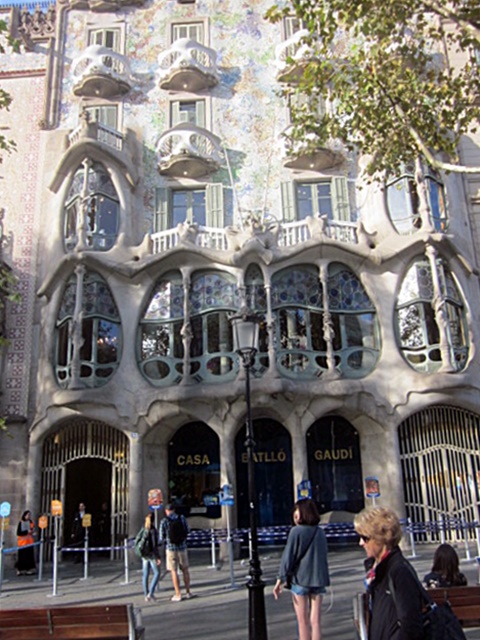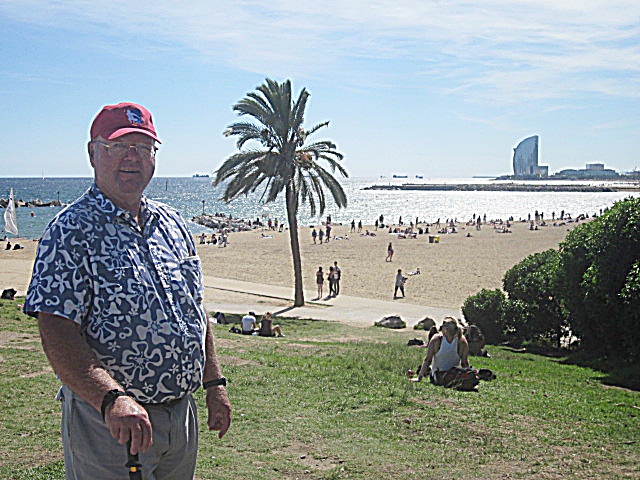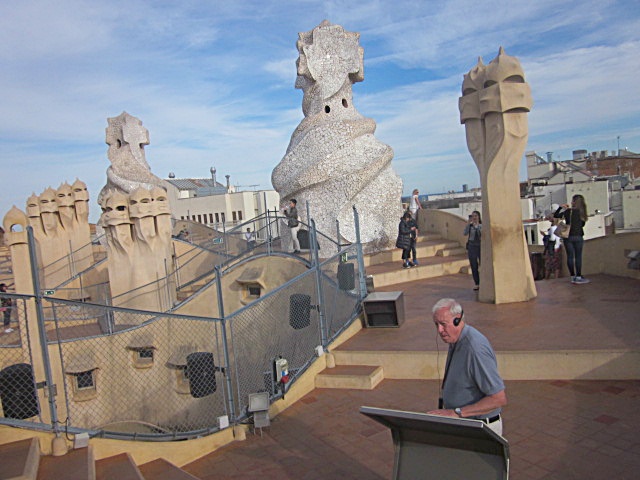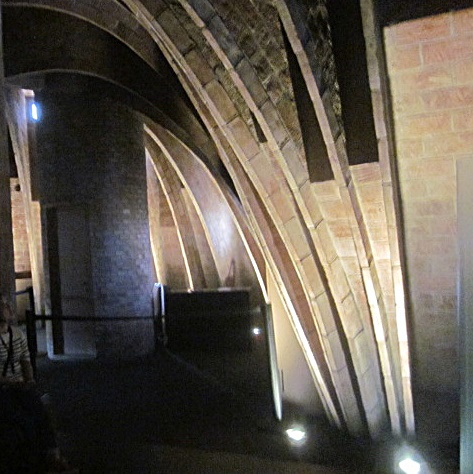Iberian Adventure – Page 02
Howdy Gaudi
Here we are on Day 3 of our trip.

The group of 26 headed off with Judy after breakfast and (with my lunch sandwich) to The Rambla de Catalunya.
This picture is near the upper end of this boulevard not far from our hotel.

Here is Antoni Gaudi (1852 – 1926). The son of a coppersmith, Gaudí was born on June 25, 1852, and took to architecture at a young age. He attended school in Barcelona, the city that would become home to most of his great works. Gaudí was part of the Catalan Modernista movement, eventually transcending it with his nature-based organic style. Some of his architecture is shown below.

Our first stop was on the Passeig de Gracia to view the Casa Mira la Pedrera by Gaudi:
This is Gaudí’s first important building. Built between 1883 and 1888, Casa Mira is an imaginative residential project made for a wealthy family that owned a ceramic factory. This is clearly reflected in the “trencadis”* façade that contains a significant variety of ceramic decorations. You can also see some Islamic architecture influences in its façade and some of its rooms.
*Trencadís is a type of mosaic used in Catalan modernism created from broken tile shards.
Later on Bob, Sandra (The 3rd Amigo) and I revisited the Casa Mira and toured the roof. Pics later.


The Casa Batlló by Gaudi, The local name for the building is Casa dels ossos (House of Bones), as it has a visceral, skeletal organic quality. The building looks very remarkable — like everything Gaudí designed, only identifiable as Modernism or Art Nouveau in the broadest sense. The ground floor, in particular, is rather astonishing with tracery, irregular oval windows and flowing sculpted stone work.
It seems that the goal of the designer was to avoid straight lines completely. Much of the facade is decorated with a mosaic made of broken ceramic tiles (trencadís) that starts in shades of golden orange moving into greenish blues. The roof is arched and was likened to the back of a dragon or dinosaur. A common theory about the building is that the rounded feature to the left of center, terminating at the top in a turret and cross, represents the lance of St George (patron saint of Catalonia, Gaudí’s home), which has been plunged into the back of the dragon (The green scaly looking part of the roof.).
From the outside the façade of Casa Batlló looks like it has been made from skulls and bones. The “skulls” are in fact balconies and the “bones” are supporting pillars. The skulls and bones are supposed to represent the maidens devoured by the Dragon that St George slew.
Enough of Gaudi for a few moments. We went back to the hotel or restaurants and had our “lunch on our own” I sat on a bench on Las Ramblas and ate my sandwich and a couple of plums and watched the crowds walk by.

After lunch we gathered again for a bus ride to the Sagrada Familia church: The Basilica Church of the Holy Family It is a large unfinished Roman Catholic church designed by Gaudi.
In 1882 construction of Sagrada Família commenced under architect Francisco Paula de Villar until 1883, when Villar resigned. Gaudí took over as chief architect, transforming the project with his architectural and engineering style, combining Gothic and curvilinear Art Nouveau forms. Gaudí devoted the remainder of his life to the project, and at the time of his death at age 73 in 1926, less than a quarter of the project was complete.

This is a model of the Church. The white areas are not yet built including the main spire dedicated to Jesus also has to be built.
We went inside using doors below the strange looking structure in the lower center. Under this structure are numerous sculptures depicting the many phases of the life of Jesus: Birth to death.


Here is that structure in detail. Note the relative size of the people.


The inside is a forest of columns that look like trees and along the sunny side there are windows with multi colored stained glass. Light was pouring in and illuminating the interior with color.

The altar was surrounded by massive columns that will one day support the tallest central “Jesus” spire. In this pic it looks like Jesus is parachuting onto the altar. It is anticipated that the building could be completed by 2026—the centenary of Gaudí’s death
After shuffling through the church, we re-boarded the bus for a quick drive to the Mediterranean coast:The Costa Brava.

Too bad we couldn’t stay longer!


A couple of interesting structures near the beach…

A ways down the coast is the Columbus Statue and Column. At the very top of the monument stands a 24 ft tall bronze statue atop a 131 ft tall Corinthian column. The statue was sculpted by Rafael Atche and is said to depict Columbus pointing towards the New World with his right hand, while holding a scroll in the left. It is more likely that the statue is situated in the current way simply to have Columbus point out to sea underscoring his achievements in naval exploration.
Pedestal of Columbus Monument
The column, hung with a device bearing an anchor, stands on an octagonal Pedestal from which four bronze winged victories take flight towards the four corners of the world, above paired griffins. Four buttresses against the octagonal pedestal bear portrait medallions that depict persons related to Columbus:
Enough of Columbus for a while.

We took the Metro back towards the Hotel. Judy had us each give her a Euro and she bought 26 tickets on discount. She would put in a ticket and yell “GO!” and one of us would run thru the gate. She was the last through and she saved us some Euros! Very smart lady!

Here’s Bob Wahl enjoying a Metro ride in a clean, quiet seat.

We left the group near the Casa Mira.

Bob Wahl, Sandra Lara (above. “The 3rd Amigo/Amiga”), and I took a tour of the Casa Mira. This amounted to an elevator ride to the roof and a walk down.
(This picture was taken at a later date in a Pigeon Park in Madrid.) That’s Juanjo our main trip leader in the background.

Our tour started on the roof. (Note the Sagrada Familia Church in the distance.)

Here are some of the bizarre shapes on the roof. Some are vents, some are chimneys. They sort of look like helmeted knight’s heads.

This is a view from the roof down to a boulevard below. The Passeig de Gracias. In the distance is the Mediterranean.

Below the roof is the attic, There was an amazing number of different arches that created the wavy look to the roof.

Here is a model of the arches holding up the roof. They look like a sinuous snake skeleton, don’t they?
After all that excitement, The 3 Amigos went to dinner at a Tapas restuarant and then called it quits for the day. So ended Day 3.
Go To Page 3
























